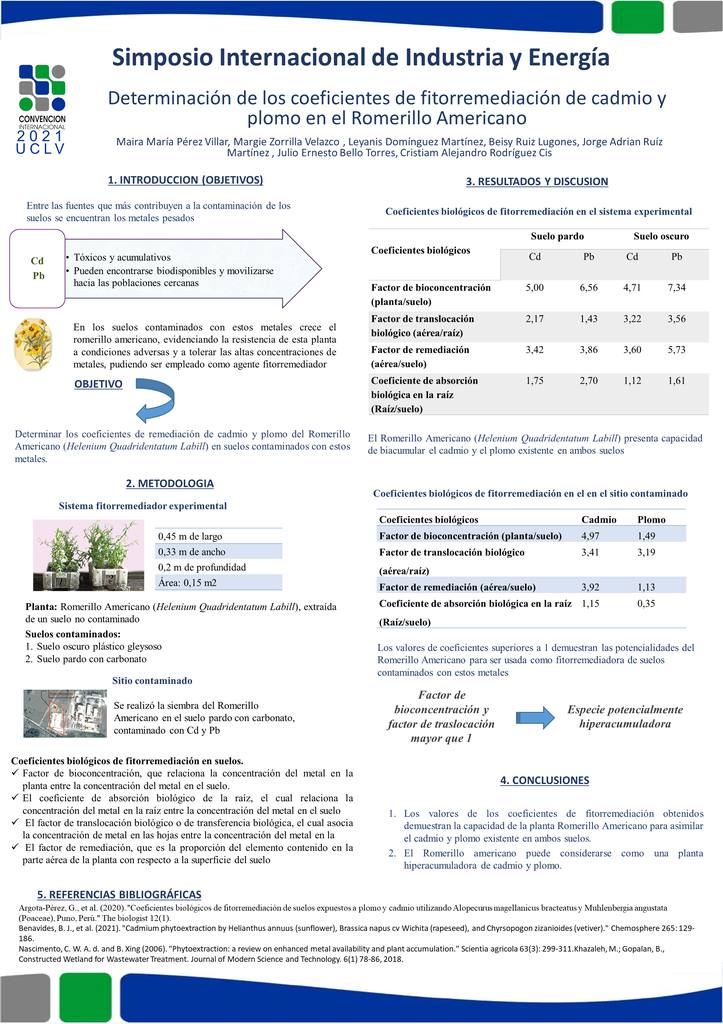Executive Secretary

International Symposium Industry

Abstract
Soil contamination is a pollution problem caused by industrialization, which has brought with it the disposal of industrial wastes. Phytoremediation is a technique that uses plants to decontaminate. Therefore, the aim of this research was to determine the remediation coefficients of cadmium and lead of American Romerillo (Helenium Quadridentatum Labill) in soils contaminated with these metals. The analysis of heavy metals in two soils, the brown soil with carbonate, more contaminated and the dark plastic gleyseous, less contaminated and in the different organs of the plant, was carried out by atomic absorption spectroscopy. The experiments were conducted at the laboratory level using experimental phytoremediation systems, with more controlled conditions and at the contaminated site, where only the brown soil was analyzed. The biological phytoremediation coefficients obtained, both for the experimental systems and in the in situ experiments, were greater than 1, except for the root biological uptake coefficient for lead. This result is in correspondence with the higher lead concentrations obtained in the leaves with respect to the root, showing the plant's capacity to assimilate this metal. The remediation coefficients obtained show that the American Romerillo (Helenium Quadridentatum Labill) has the capacity to bioaccumulate cadmium and lead in both soils.
Resumen
La contaminación de los suelos constituye un problema provocado por la industrialización, que ha traído consigo el vertimiento de residuos industriales. La fitorremediación es una técnica que utiliza plantas para descontaminar. Por ello, esta investigación tuvo como objetivo determinar los coeficientes de remediación de cadmio y plomo del Romerillo Americano (Helenium Quadridentatum Labill) en suelos contaminados con estos metales. Se realizó el análisis de los metales pesados en dos suelos, el suelo pardo con carbonato, más contaminado y el oscuro plástico gleysoso, menos contaminado y en los diferentes órganos de la planta, mediante espectroscopia de absorción atómica. Los experimentos fueron realizados a nivel de laboratorio mediante sistemas fitorremediadores experimentales, con condiciones más controladas y en el sitio contaminado, donde solo se analizó el suelo pardo. Los coeficientes biológicos de fitorremediación obtenidos, tanto para los sistemas experimentales como en los experimentos realizados in situ, fueron superiores a 1, excepto en el coeficiente de absorción biológica en la raíz para el plomo. Este resultado está en correspondencia con las mayores concentraciones de plomo obtenidas en las hojas con respecto a la raíz, mostrando la capacidad de la planta para asimilar este metal. Los coeficientes de remediación obtenidos muestran que el Romerillo Americano (Helenium Quadridentatum Labill) presenta capacidad de bioacumular el cadmio y el plomo existente en ambos suelos.
About The Speaker

Dr. Maira María Pérez Villar


